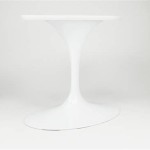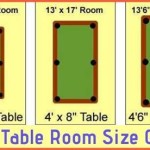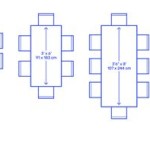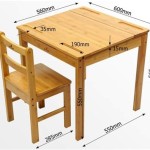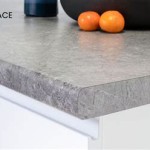Stylish Dressing Table Designs For Bedroom
The dressing table, also known as a vanity, has evolved from a simple furniture piece to an integral element of bedroom décor. It serves not only as a functional space for grooming and makeup application but also as a statement piece that reflects personal style. When choosing a dressing table, considerations like size, style, storage capacity, and overall aesthetic compatibility with the bedroom are crucial. This article examines various stylish dressing table designs suitable for different bedroom aesthetics and functional needs.
The primary purpose of a dressing table remains consistent: to provide a dedicated area for personal grooming. However, the design variations are extensive. From minimalist floating shelves to elaborate vintage-inspired setups, the options cater to diverse preferences and spatial constraints. The selection process should involve a careful assessment of individual needs and the existing design language of the bedroom.
Space Optimization and Size Considerations
One of the most critical factors when selecting a dressing table is the available space. Bedrooms, particularly in urban dwellings, often have limited square footage. Therefore, understanding the dimensions of the bedroom and the potential placement of the dressing table is paramount. Overcrowding can detract from the room's overall aesthetic and functionality.
For smaller bedrooms, compact dressing tables or wall-mounted options are ideal. These designs maximize floor space while still providing adequate surface area for essential grooming items. Wall-mounted dressing tables, in particular, offer a streamlined look and can contribute to a sense of spaciousness. Another space-saving solution is a dressing table that doubles as a desk. This multi-functional approach is perfect for individuals who need a dedicated workspace as well as a grooming area.
Larger bedrooms offer more flexibility in terms of dressing table size and design. Larger vanities with ample storage and surface area can be accommodated without compromising the room's layout. These larger options often incorporate features like multiple drawers, cabinets, and even built-in lighting.
Regardless of the size, it is essential to ensure that the dressing table complements the existing furniture and does not visually overwhelm the space. Measuring the available space and creating a floor plan can help visualize the placement and ensure optimal flow within the room.
Exploring Different Styles and Aesthetics
The style of the dressing table should harmonize with the overall aesthetic of the bedroom. Different design styles cater to various tastes, from modern minimalism to traditional elegance. Understanding these styles is crucial for making an informed decision.
Modern Minimalist: Modern dressing tables are characterized by clean lines, simple forms, and a focus on functionality. These designs often incorporate neutral colors like white, gray, and black, with accents of metal or glass. Storage solutions are typically integrated seamlessly, with concealed drawers and cabinets. The emphasis is on creating a clutter-free and streamlined look.
Traditional Elegance: Traditional dressing tables evoke a sense of timeless sophistication. They often feature ornate details, such as carved legs, decorative hardware, and intricate moldings. Materials like dark wood, velvet, and satin are commonly used. These dressing tables are designed to be statement pieces that exude luxury and refinement.
Bohemian Chic: Bohemian dressing tables embrace a more relaxed and eclectic aesthetic. They often incorporate natural materials like rattan, wood, and bamboo, along with vibrant colors and textures. Vintage or repurposed furniture pieces are commonly used to create a unique and personalized space. The look is characterized by its informality and artistic flair.
Glamorous Hollywood: Hollywood-inspired dressing tables are all about opulence and drama. They often feature mirrored surfaces, plush upholstery, and ample lighting. These dressing tables are designed to create a luxurious and glamorous atmosphere, reminiscent of Old Hollywood style. They typically include features like lighted mirrors and ample storage for makeup and accessories.
Rustic Charm: Rustic dressing tables bring a touch of natural warmth to the bedroom. They often feature reclaimed wood, exposed hardware, and a distressed finish. These designs emphasize simplicity and authenticity, creating a cozy and inviting atmosphere. They are often paired with other rustic elements, such as woven baskets and natural textiles.
Choosing a style that resonates with personal taste and complements the existing décor is essential for creating a cohesive and harmonious bedroom design.
Storage Solutions and Organizational Features
A key function of a dressing table is to provide adequate storage for makeup, skincare products, hair accessories, and other essential grooming items. The design of the storage solutions is crucial for maintaining an organized and clutter-free space. The specific storage needs will vary depending on the individual's routine and the amount of product to be stored.
Drawers: Drawers are a fundamental component of most dressing tables, offering enclosed storage for various items. The number, size, and configuration of the drawers can vary depending on the design. Some dressing tables feature shallow drawers for makeup palettes and brushes, while others have deeper drawers for larger items like hair dryers and styling tools.
Cabinets: Cabinets offer concealed storage for items that are not used as frequently or that need to be kept out of sight. They are particularly useful for storing skincare products, perfumes, and other items that benefit from being protected from light and dust.
Open Shelves: Open shelves provide easy access and visual display for frequently used items. They can be used to showcase decorative items, plants, or collections of beauty products. Open shelving can also add visual interest to the dressing table design.
Dividers and Organizers: Internal dividers and organizers are essential for keeping drawers and cabinets neat and organized. These can include dividers for makeup brushes, compartments for jewelry, and stacking trays for skincare products. Clear organizers are particularly useful for allowing visibility and easy access.
Built-in Lighting: Adequate lighting is crucial for makeup application and grooming. Dressing tables with built-in lighting provide a focused and even light source. LED lights are a popular choice due to their energy efficiency and long lifespan. The placement and intensity of the lighting should be carefully considered to ensure optimal visibility.
Mirrors: The mirror is an integral component of the dressing table. The size, shape, and style of the mirror can significantly impact the overall aesthetic. Some dressing tables feature a single large mirror, while others have a tri-fold mirror for a wider viewing angle. Lighted mirrors are also a popular option, providing enhanced visibility for makeup application.
When selecting a dressing table, it is essential to consider the specific storage needs and choose a design that provides adequate space and organizational features. A well-organized dressing table can streamline the grooming routine and contribute to a more relaxing and enjoyable experience.
Choosing the right materials for a dressing table significantly impacts its durability, aesthetics, and overall value. The selection should consider both functional requirements and the desired style.
Wood: Wood is a classic material for dressing tables, offering durability and a timeless appeal. Different types of wood, such as oak, maple, and walnut, offer varying grain patterns and colors. Solid wood is the most durable option but can be more expensive. Engineered wood, such as plywood and MDF, is a more affordable alternative that can still provide good stability and strength. Wood finishes can range from natural stains to painted surfaces, allowing for versatility in design.
Metal: Metal accents can add a modern and industrial touch to a dressing table. Metal frames, legs, and hardware can be used to create a sleek and contemporary look. Common metals used include steel, iron, and aluminum. Powder-coated metal finishes are durable and resistant to scratches and corrosion.
Glass: Glass elements can add a touch of elegance and sophistication to a dressing table. Glass tabletops, shelves, and mirrors can create a sense of lightness and openness. Tempered glass is a safer option than regular glass, as it is more resistant to breakage. Glass should be cleaned regularly to maintain its clarity and shine.
Mirror: Mirrors are an essential part of dressing tables and come in different types, including clear, tinted, and antique. Beveled edges on mirrors add a decorative touch. The size and shape of the mirror can influence the overall aesthetic of the dressing table. Large mirrors not only aid in grooming but also create a sense of spaciousness in the room.
Upholstery: Some dressing tables incorporate upholstered elements, such as padded stools or benches. Fabric choices can range from luxurious velvet to durable linen. The fabric should be chosen to complement the overall style of the dressing table and withstand regular use. Upholstery can add comfort and visual interest to the dressing table area.

Wall Mounted Dressing Table Designs For Bedroom Design Cafe

The Ultimate Guide To Finding Your Dream Dressing Table Design Saraf Furniture

Best Modern Dressing Table Designs For Your Bedroom

Stylish Dressing Table Design For Your Living Room

Let S Explore Modern Dressing Table Design Ideas Kolo

Top 10 Impressive Modern Dressing Table Design Decorpot

Dressing Table With A Mirror Modern Accessories Id Room Design Decor

15 Dressing Table Design Concepts To Glam Up Your Bedroom

Top 10 Impressive Modern Dressing Table Design Decorpot

Stunning Wooden Dressing Table Designs For Bedroom Nill At Home

